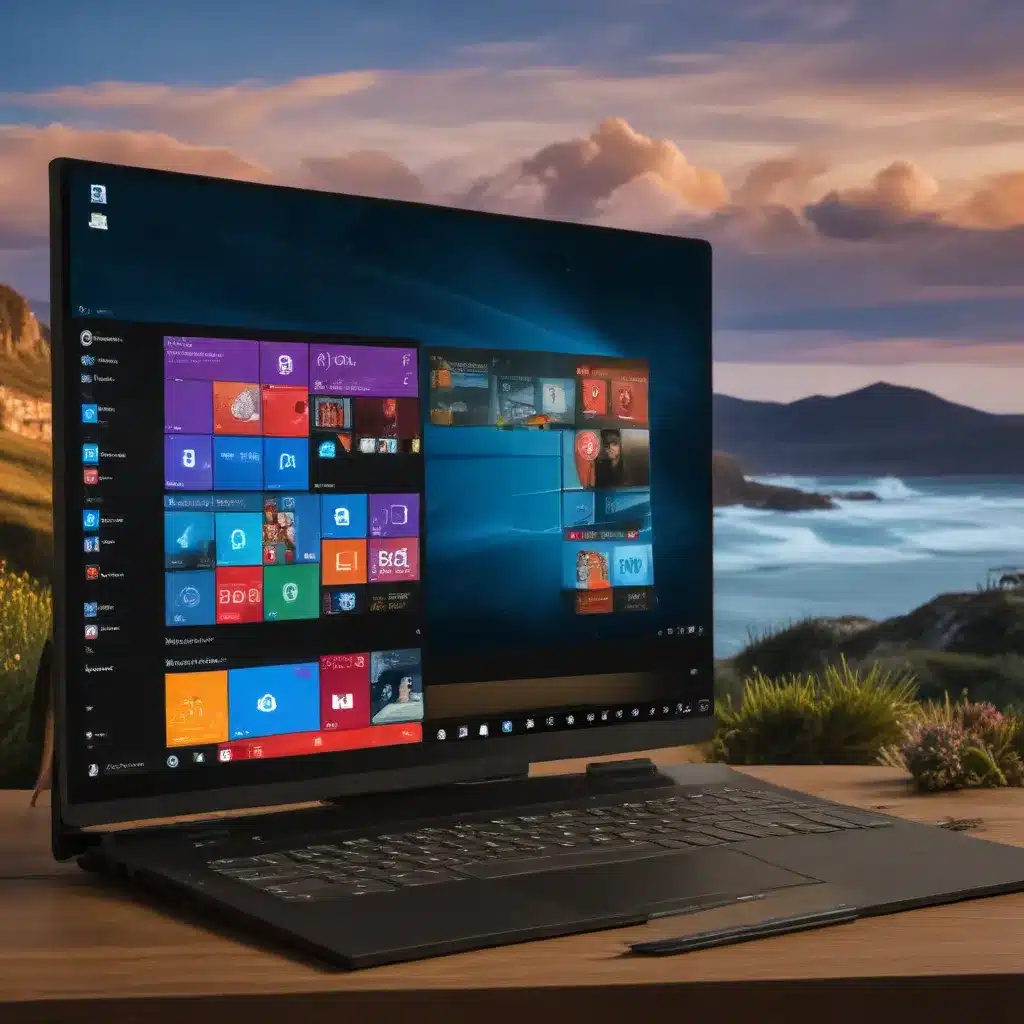
As an experienced IT professional, I’m excited to share practical tips and in-depth insights on how you can customize your Windows 10 experience to better suit your needs and preferences. In this comprehensive guide, we’ll explore the powerful tools and techniques available to personalize your taskbar and start menu layouts, empowering you to optimize your workflow and boost productivity.
Customizing the Windows 10 Start Menu
One of the most significant ways to personalize your Windows 10 experience is by customizing the start menu. The start menu serves as the central hub for accessing your most-used applications, documents, and system settings, so tailoring it to your specific needs can significantly improve your daily computing experience.
To begin, let’s explore the process of exporting and importing a custom start menu layout. This approach allows you to create a personalized start menu on one machine and then deploy it across multiple devices, ensuring a consistent user experience for your team or organization.
Exporting a Custom Start Menu Layout
1. On a Windows 10 machine with the desired start menu configuration, open an elevated PowerShell window.
2. Run the following command to export the current start menu layout to an XML file:
powershell
Export-StartLayout -Path C:\Windows\StartLayout.xml
This command will create a file named StartLayout.xml in the C:\Windows directory, which contains the current start menu layout.
Importing a Custom Start Menu Layout
1. Copy the StartLayout.xml file to the target machines, either manually or through a deployment solution like Microsoft Intune or System Center Configuration Manager (SCCM).
2. On the target machines, open an elevated PowerShell window and run the following command to import the custom start menu layout:
powershell
Import-StartLayout -LayoutPath C:\Windows\StartLayout.xml -MountPath C:\
The MountPath parameter specifies the root directory of the target machine, which is typically C:\ for a local installation.
By using the Import-StartLayout cmdlet, you can ensure that the start menu layout is applied consistently across all user profiles, including new users who log in to the machine.
Customizing the Windows 10 Taskbar
In addition to the start menu, the taskbar is another important element of the Windows 10 user interface that can be customized to enhance productivity. The taskbar allows you to pin your most frequently used applications, providing quick access and a streamlined workflow.
To customize the taskbar, you can follow a similar process to the start menu layout customization:
- On a Windows 10 machine with the desired taskbar configuration, open an elevated PowerShell window.
- Run the following command to export the current taskbar layout to an XML file:
powershell
Export-StartLayout -UseDesktopApplicationPinning -Path C:\Windows\TaskbarLayout.xml
This command will create a file named TaskbarLayout.xml in the C:\Windows directory, which contains the current taskbar layout.
- Copy the
TaskbarLayout.xmlfile to the target machines, either manually or through a deployment solution like Microsoft Intune or SCCM. - On the target machines, open an elevated PowerShell window and run the following command to import the custom taskbar layout:
powershell
Import-StartLayout -LayoutPath C:\Windows\TaskbarLayout.xml -MountPath C:\
The MountPath parameter specifies the root directory of the target machine, which is typically C:\ for a local installation.
By combining the customized start menu and taskbar layouts, you can create a tailored Windows 10 environment that streamlines your daily workflows and enhances productivity.
Addressing Potential Challenges
While the process of customizing the start menu and taskbar layouts is relatively straightforward, you may encounter some challenges during deployment or when applying the custom layouts to new user profiles. Here are a few common issues and potential solutions:
Existing User Profiles
If you’ve already logged in to the target machines with user accounts, the custom start menu and taskbar layouts may not apply to those existing profiles. To address this, you can manually copy the LayoutModification.xml file to the %LOCALAPPDATA%\Microsoft\Windows\Shell directory for each user profile, or use a script to automate the process.
Missing Application Shortcuts
If the applications you want to pin to the start menu or taskbar are not yet installed on the target machines, the corresponding shortcuts may not be available, resulting in empty or partially populated layouts. To mitigate this, ensure that all necessary applications are installed before applying the custom layouts, or consider using a deployment solution that can synchronize the application installations and the layout customizations.
Conflicting Policies or Settings
In some cases, existing Group Policy settings or other system configurations may interfere with the custom start menu and taskbar layouts. Carefully review your environment’s policies and settings to ensure that they do not overwrite or conflict with the personalized layouts you’ve created.
By addressing these potential challenges and following the best practices outlined in this guide, you can successfully deploy custom start menu and taskbar layouts across your organization, providing a consistent and streamlined Windows 10 experience for your users.
Conclusion
Customizing the Windows 10 start menu and taskbar layouts is a powerful way to personalize your computing experience and boost productivity. By leveraging the tools and techniques outlined in this article, you can create a tailored work environment that aligns with your unique needs and preferences.
Remember, the key to successful customization is thorough planning, testing, and deployment. By taking the time to optimize your Windows 10 setup, you’ll not only improve your own efficiency but also set the stage for your team or organization to thrive in an increasingly digital world.
If you have any further questions or need assistance with your Windows 10 customization efforts, don’t hesitate to reach out to the IT Fix team at https://itfix.org.uk/. We’re here to provide expert guidance and support to help you get the most out of your Windows 10 experience.












